Paper Mario: The Thousand-Year Door (Nintendo Switch) Review
By Az Elias  26.05.2024
26.05.2024
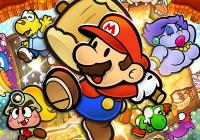
The GameCube was home to a number of stellar first party titles, many of which haven't seen the light of day since their initial release over twenty years ago. Nintendo hasn't quite done the best job at preserving these classics, but there have been some attempts at bringing certain beloved games back in recent years, either through basic ports or entire remakes. Paper Mario: The Thousand-Year Door is one such example - the sequel to the Nintendo 64 paper-styled role-playing game Paper Mario. In remaking this peak title in the series, a whole new set of players can discover why this gem is held in such high regard by Nintendo fans the world over.
At first glance, it may seem like Paper Mario: The Thousand-Year Door is a simple port of the original GameCube version. A closer inspection, however, reveals that the entire game has been recreated from the ground up. In general, it is all for the better. More vibrant colours and a new lighting system make the main hub town of Rogueport and its connected areas pop out much more than before, and there is a greater emphasis on the paper-styled world, with previously 3D-modelled objects being much more obviously crafted with paper.
It is fair enough to double-down on the paper elements that the series is known for - the visual design is a unique one that allows Nintendo to come up with a variety of gameplay ideas in the process, letting Paper Mario: The Thousand-Year Door (and the rest of the series) stand out amongst the crowd. The difference with this game is that, unlike later entries (and outside of some marketing material), the paper graphics aren't constantly brought up by its characters, running the jokes into the ground. This is, instead, an RPG set in the Mario world, which just so happens to be designed with a thoughtful papercraft design.
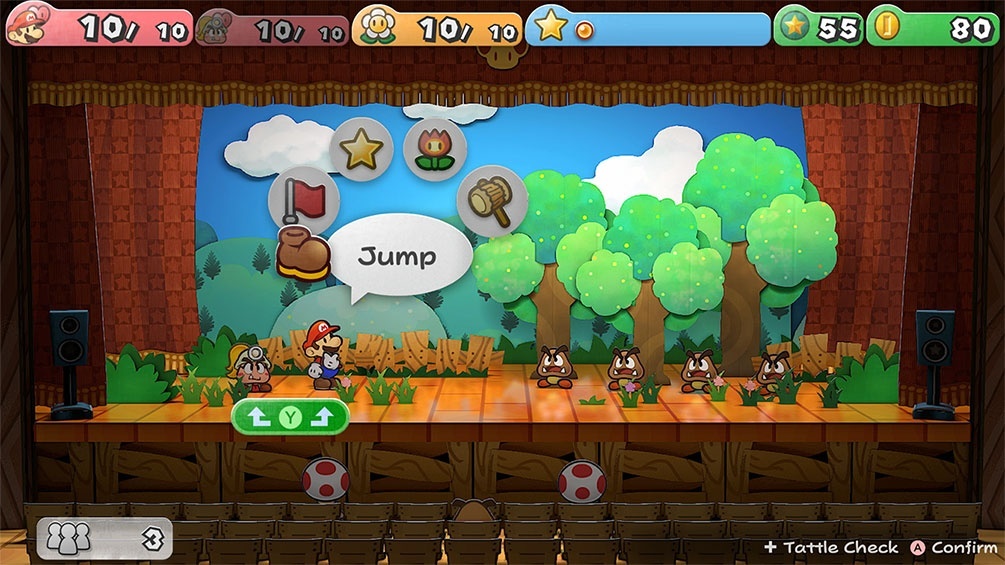
A trade-off in this Nintendo Switch remake, unfortunately, is that the 60 frames-per-second gameplay of the original version is dropped to 30 fps, making for a game that doesn't feel as smooth as before. Purists may find this to be enough of an issue to hold off for a possible performance boost on Nintendo's next hardware, assuming Switch titles will be compatible with the system. It is unknown if it was a design choice to go with a frame rate of 30, given other recent Paper Mario titles run the same way, but it must be said, from a personal perspective, the reduced speed of this remake isn't a major problem.
It will be noticeable if purposely booting up an old copy of the game on GameCube for comparison's sake, but for an RPG set in a papercraft world, it isn't much to be annoyed about as opposed to a first-person shooter or action game lacking 60 fps. Options are always important to have where possible, and the hope is that there will be a way to boost the frame rate if playing on Nintendo's newest machine, but as it stands, this shouldn't really turn anyone away from playing The Thousand-Year Door on Switch presently.
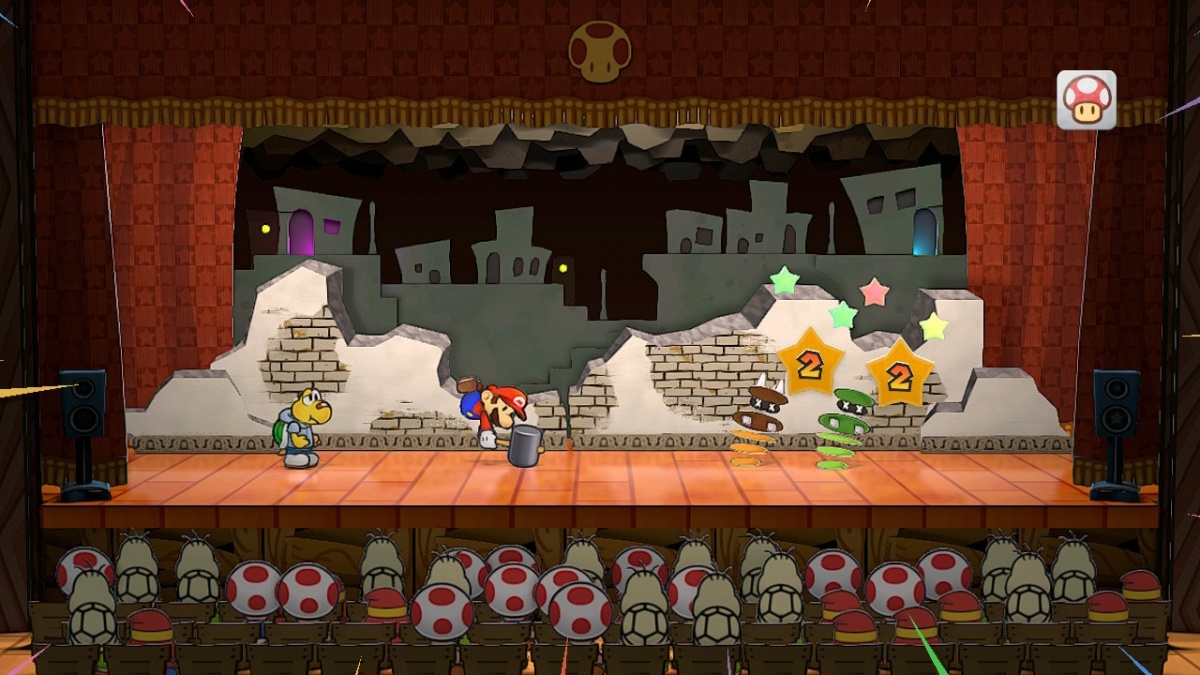
This second entry in the Paper Mario series is a return to its roots as a turn-based RPG, as Mario explores various towns, sewers, woods, castles, haunted houses, floating island battle arenas, and plenty more wacky locations in a quest to find the seven Crystal Stars and rescue the captured Princess Peach. Set in unfamiliar territory away from traditional Mushroom Kingdom lands, there are many original characters that expand the Mario universe for the better.
Paper Mario: The Thousand-Year Door isn't afraid to not only give plenty of personality to its established characters and species - whether they be goombas, koopa troopas, or bob-ombs, or well-known individuals like Bowser and Peach - but also go all out in presenting completely distinct people in the X-Naut prime antagonists, sidekicks that travel alongside Mario on his adventure, and quirky non-playable characters that inhabit the different locales. With the Mario series sorely lacking in character originality and lore expansion over the last couple of decades, save for some exceptions here and there, this game is both a reminder and an insight into the vastness and humour that can be extracted from this universe.
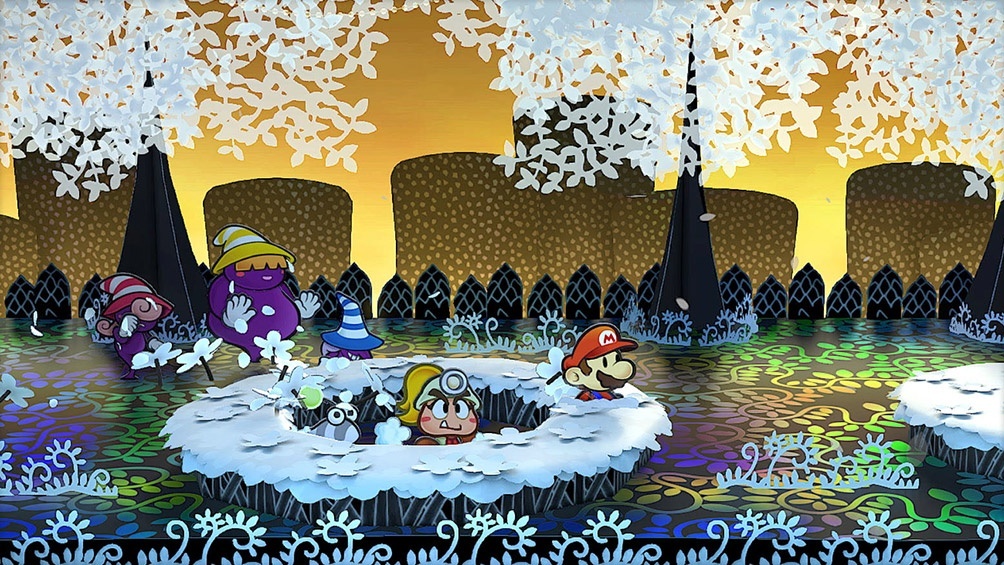
In a world in which a small human plumber mingles with talking mushrooms, rides dinosaurs with long and sticky tongues, and battles a giant spiky turtle that breathes fire, it is both surprising and a shame that more bizarre and original ideas haven't quite been brought out in post-GameCube Mario lore, especially in recent RPG entries. If anything, this genre is exactly where that crazy and hysterical side to the universe needs to come out, so it is such a pleasure to experience that and more in this revival.
With any luck, the hopeful success of The Thousand-Year Door's remake will mean the reappearances of great characters like Vivian, Admiral Bobbery and Rawk Hawk as future Mario Kart drivers. After all, such comical and distinct personalities deserve to have more than one video game showing, particularly in a series in which some of its multi-character spin-offs are just as popular as its main games.

Despite the recapturing of Princess Peach, this time around it isn't Bowser doing the kidnapping, and the king of the koopas himself finds himself entangled in this sweeping quest for treasure. The normal adventuring of Mario is broken up with brief playable segments featuring both Bowser and Peach, with the former showcasing plenty of entertaining and silly gameplay and dialogue, while Peach's scenarios take a slightly serious and deeper tone in her conversations with her captors.
The core gameplay is that of Mario and his friends, of which he gains a new companion each chapter, travelling from the central town of Rogueport, speaking to its citizens to find clues, discovering paths to new areas, and taking on various side-quests, in between battling in traditional Mario RPG format. Anyone familiar with the original Paper Mario or the recent remake of Super Mario RPG will be at home in The Thousand-Year Door, as Mario uses his jump and hammer attacks against his foes, timing button presses to deal additional damage or perform special abilities, alongside his unique sidekick moves, while also using good judgment to dodge or reduce damage done to him.

There isn't anything too difficult to understand regarding the battle system, but it is certainly more fun and engaging than modern Paper Mario efforts that reduced battles to pure repetition. At least here there is room for a little strategy by utilising specific party members and abilities a lot more, and the badges that can be obtained throughout the course of the game can be equipped to provide different moves and perks, provided Mario has enough badge power to use the ones he wants. It is a simple RPG setup that will appeal to those not too big on the genre, but there is enough to find enjoyment for anyone that craves a Mario RPG.
The out-of-battle abilities Mario gains access to provide an amusing means to traversing the world and discovering hidden areas, whether it be turning into a paper airplane to make it to distant platforms, becoming a boat to sail a river, or flipping sideways to slide through gaps in railings. Sidekick talents, such as Flurrie's gales that peel away loose paper walls, and Bobbery's explosions that blow up cracks, offer another means to reaching new areas. There is a steady sense of progression as Mario completes each chapter, as his new partners and abilities offer the opportunity to further explore previous locations to pick up collectables and access secrets.
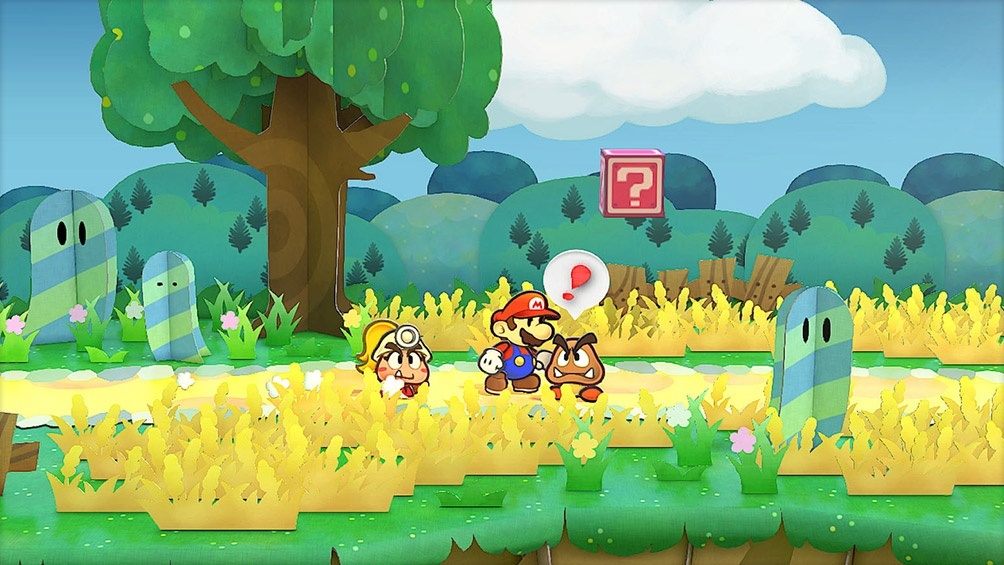
As far as RPGs go, Paper Mario: The Thousand-Year Door nails the desire for one in the genre that doesn't overstay its welcome. It isn't on the lengthy end of the spectrum, like Xenoblade games are, and mixes this with all the humour and fun craved by Mario fans that wish to see more from its world and characters.
Nintendo took some time to make a few positive changes over the original title with this Switch remake, too. Some new shortcuts to multiple areas have been added that will save a bit of backtracking here and there, a hint system gives a quick reminder as to what to do next (handy when not playing the game for a few days), a button now allows for quick switching of party members to swiftly utilise their abilities outside of battle, art and sound galleries have been added, and an entirely new soundtrack has been created (with the ability to switch to the original at any time by equipping a certain badge). The new tracks are exceptionally good, and the changing battle themes with each chapter are especially pleasing to the ears. Plenty more little changes have been made and added, although it is unfortunate that still only one side-quest can be accepted at a time from the trouble centre.
Paper Mario: The Thousand-Year Door reminds us once again that it is a good thing to explore and expand a game's universe, especially one that has stalled and been stale for far too long. This revival of the great GameCube RPG is certainly a peak for the series, not being afraid to give personality and humour to well-known characters, while also delivering fresh ones that deserve a return in future games. The Mario series is brilliant in its simplicity, but this game proves that it can be just as excellent when it develops its lore and doesn't resort to reducing everyone to generic Toads and paper jokes.

Cubed3 Rating
Exceptional - Gold Award

Everything that Paper Mario: The Thousand-Year Door entails is everything that is desired in this series - turn-based timed button battles, completely original characters in familiar and new species, witty dialogue, and an emphasis on story and greater lore. This is a unique adventure full of fun and clever gameplay ideas, offering a medium-length RPG that will satisfy Mario fans eager to see more than stomping on koopas and - in the case of the more recent Paper Mario titles - repetitive battle systems and generic characters. If all goes well, fingers crossed that the success of this game can pave the way for a brand-new entry in the same vein as this one - ideally without a paper joke in sight.
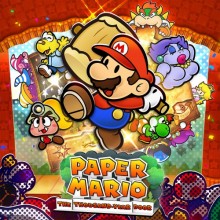
![]() 9/10
9/10
![]() 0
(0 Votes)
0
(0 Votes)
 Out now
Out now  Out now
Out now  Out now
Out now  Out now
Out now Comments
Comments are currently disabled

 Sign In
Sign In Game Details
Game Details Subscribe to this topic
Subscribe to this topic Features
Features







 Top
Top

